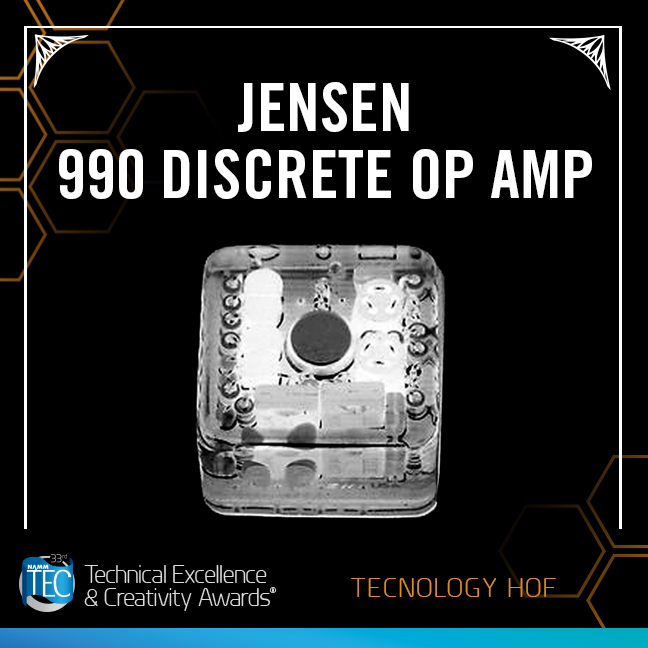Known since the 1940’s in vacuum tube form (based on two 12AX7 dual triode tubes), op-amps are differential amplifiers with a wide range of applications in analog circuit design. By packaging the op-amp in a socketed design with discrete components, op-amps provided a convenient means of accomplishing amplification tasks from a single component package. In 1968, the (now-almost universal) 741 op-amp came out, which put the equivalent of a 20-transistor circuit into a tiny 8-pin monolithic integrated circuit chip. The cost savings to manufacturers was a huge draw, particularly for audio gear and IC op-amps were soon implemented into all types of pro and consumer gear.
The IC approach, while convenient, exhibited performance weaknesses compared to discrete component designs, particularly in critical professional audio applications, such as consoles and mic preamplifiers.
Deane Jensen, a design engineer for console companies such as Quad-Eight and API had been researching op-amp designs. In 1979, he published an AES Journal paper on his work on an improved approach to what would become the 990, a potted transistor module using all discrete components. The 990 exhibited a combination of low noise, low distortion, slew rate, stability and high output drive capabilities and that were hailed as a performance breakthrough in the pro community.
Jensen was also known for his world-class audio transformer designs, from his successful company Jensen Transformers, and while the 990 was not a huge moneymaker, Jensen was thrilled that these modules found and appreciative audience.
Sadly, Jensen passed away in 1989, and the 990 continues in production in a third-generation 990C made by the John Hardy Company. Today, Jensen Transformers continue being manufactured as a subsidiary of Radial Engineering.

